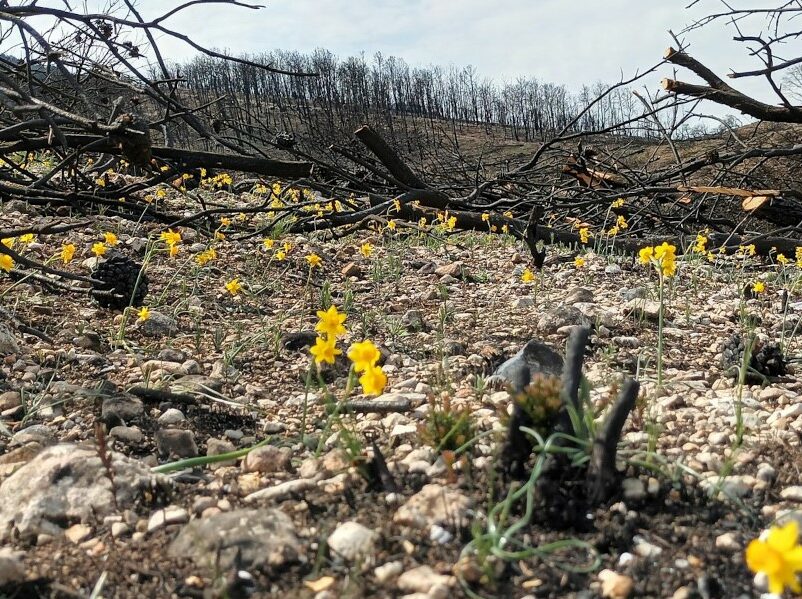A study led by the CTFC, the UdL and the Joint Research Unit CTFC-Agrotecnio-CERCA analyses the regeneration of 268 forest fires over almost three decades.
The duration of a drought in the months following a fire is the main factor affecting the regeneration success of Mediterranean forests. This is shown by a recently published study in the journal Fire Ecology led by the University of Lleida (UdL), the CTFC-Agrotecnio-CERCA joint research unit and the University of Zaragoza.
The team has studied the recovery of vegetation in 200,000 hectares of Catalonia, Aragon and the Valencian Community burned by 268 forest fires over a period of 27 years, between 1988 and 2015. The results warn that the scenario could worsen with climate change, even in the wettest areas.
The researchers, led by Miguel Ángel Blanco-Rodríguez, PhD student at the CTFC and associate professor at the UdL, have used time series of multispectral satellite images (Landsat) to calculate the rate of vegetation recovery five years after each fire. The analysis focuses on those forest fires that had affected more than 50 hectares, as they represent most of the total area burned during the period studied. The main objective was to assess the importance of fire severity, subsequent climate and topography on forest regeneration, also taking into account the different aridity gradients in the study area.
From the data provided by the satellite images, the experts have focused this time on the analysis of the brightness of the pixels (Tasseled Cap Transformation Brightness-TCTB) included within the perimeters of the 268 fires; before, during and after each catastrophe. Each pixel represents a 30 by 30 metre square. “The land without vegetation has a higher brightness and, as the vegetation cover recovers, the levels go down”, explains Blanco-Rodríguez, who carried out the work with other members of the Research Group on Adaptive Management and Forest Dynamics (ADAPTAFOR) at the UdL.
The results of the study reveal that in 99.7% of the models, the duration of drought was the factor that most damaged the restoration of vegetation cover after a fire, especially in semi-arid and humid areas. They also showed that the second most relevant variable in post-wildfire regeneration was severity. “In semi-arid areas, recovery was negatively affected by an increase in fire severity, while in sub-humid and humid areas the effect was the opposite”, the conclusions state.
The team considers it necessary to pay special attention to regeneration in forests distributed at both extremes of the climatic gradient: semi-arid and humid areas. “Our study highlights the key role played by the duration of drought in the recovery of vegetation during the first years after a forest fire in the western Mediterranean basin and, in particular, in forests located in climatically extreme areas”, stresses the researcher from the UdL and CTFC-Agrotecnio-CERCA.
Furthermore, “the results suggest that the increasing recurrence of periods of extreme drought associated with climate warming, together with a higher frequency and intensity of large fires may modify the structure and composition of Mediterranean forest ecosystems, limiting the resilience of vegetation and compromising the future resilience of forests,” warns Blanco.
Text: Premsa UdL / CTFC / Agrotecnio · Image: M.A. Blanco
More information:

